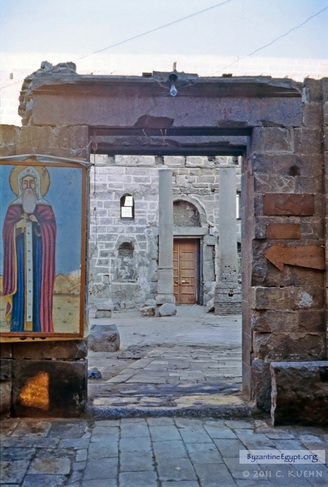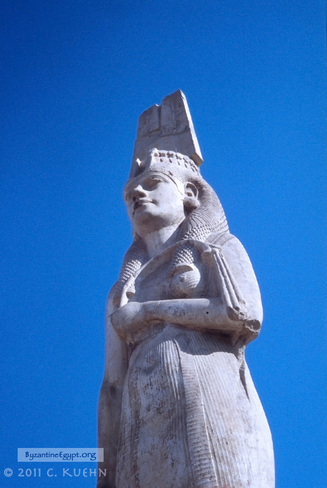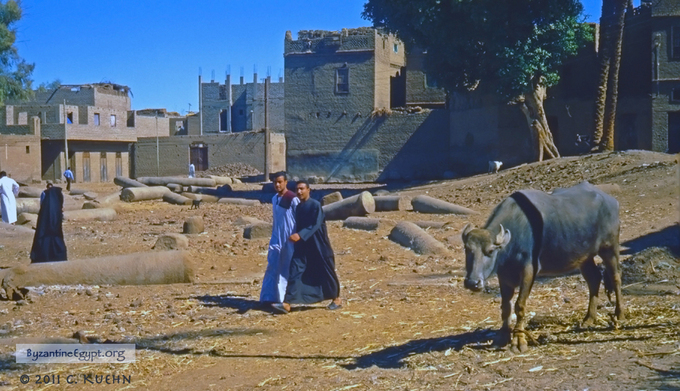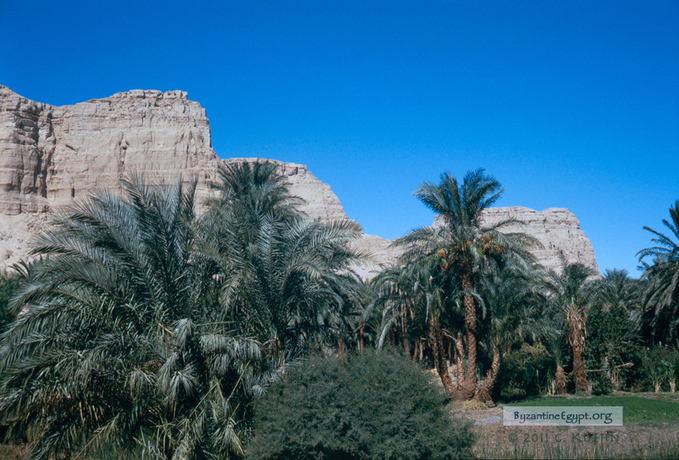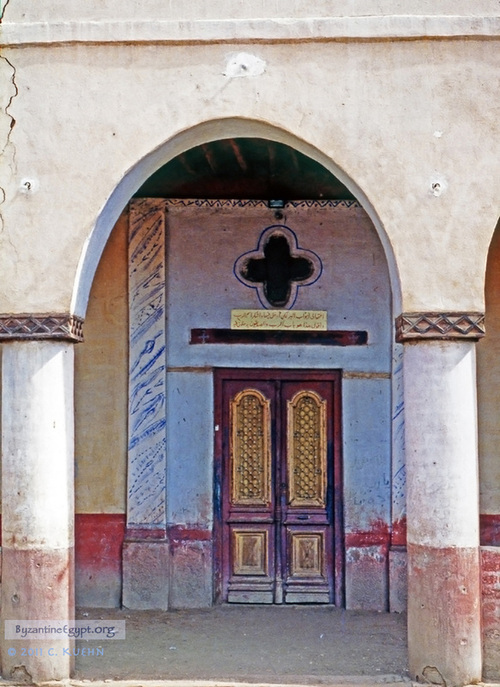(3) Religious Life - continued
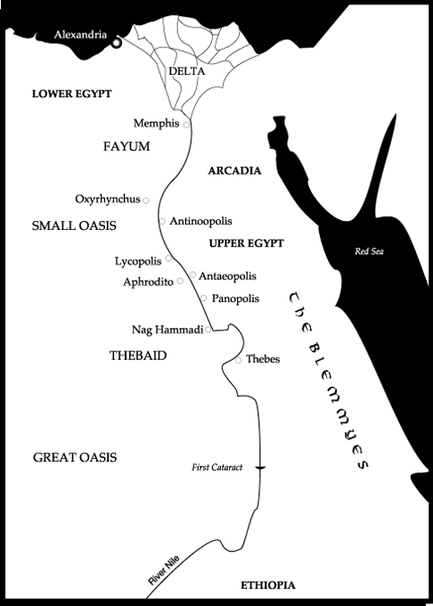
Map © 1995, 2011 Aaron R. Kuehn
(3.2)
Not far from the village were the now renowned monastic sites of Bawit, Balayza,
and Wadi Sarga. A little north of Aphrodito was Hypselis, where in the
sixth century Rufus wrote his extensive Bible commentaries. Lycopolis (now called Asyut) was
the
hometown of Plotinus. His extensive Neoplatonic writings were crucial to
the
development of Christian mystical philosophy. In the other direction,
about fifty kilometers south of Aphrodito, stood the famous White
Monastery, which
was founded in 440 by Shenoute, a vigorous and powerful Coptic abbot.
(The
Coptic language was the last stage of the original Egyptian language,
and the
Coptic culture was Christian.) Across the river lay Panopolis (now called Akhmim). It was a cultural center and the hometown of
Nonnus. Nonnus of Panopolis, who was writing at the beginning of the fifth century, was the author of the two most
influential epics in the early Byzantine period. These were a verse paraphrase of the
gospel of Saint John and the Dionysiaca,
which recounts in hexameters the myths of Dionysus. Panopolis was also the
birthplace of Cyrus, a popular poet, a consul in Constantinople (441), and
later an exceptionally devout bishop in Phrygia.
Left: "Illumination." The White Monastery. Right: "Meret Amun." This unique statue of the daughter of Ramesses II overlooks the excavations at Akhmim (Panopolis). Photos © 1995, 2011 C. Kuehn
South of Panopolis and up the
river’s bend was the site of the first Christian monasteries, those established
by Pachomius. The Pachomian headquarters at Pbow (now called Faw Qibli) contained a library that included the mystic Vision of Dorotheos (P.Bodmer
XXIX), the Homeric epics, and the comedies by Menander. And not far from
this monastery, in the cliffs of Jebel Tarif, were found the Nag Hammadi
gnostic codices. It is evident that Aphrodito and its neighborhood were an
important center not only for the culture of the
early Byzantine Empire, but also for Christian living, writing, and thought.
"Pbow." One of the first Christian monasteries was established at Pbow, now called Faw Qibli.
Photo © 1995, 2011 C. Kuehn
Photo © 1995, 2011 C. Kuehn
"Jebel Tarif." Gnostic texts were found in caves here, near Nag Hammadi.
Gnosticism was considered a heresy by the Orthodox Church. Photo © 1995, 2011 C. Kuehn
Gnosticism was considered a heresy by the Orthodox Church. Photo © 1995, 2011 C. Kuehn
(3.3)
Apparently many of Apollos’ own business transactions involved monasteries and
churches. Then Apollos himself, just before his trip to Constantinople or soon
after his return, renounced his seemingly successful career and entered the
monastic life. He entered a monastery that he himself had founded, the
Monastery of the Holy and Christ-Bearing Apostles (later called, less formally,
the Monastery of Apa Apollos). He gave responsibility for the monastery’s legal
affairs to his eldest son, the poet and lawyer Flavius Dioscorus. Apollos,
although continuing some secular involvements, remained a monk until his death
in 546/7.
"Church Door." Kom Ishqaw (Aphrodito), Egypt. Photo © 1995, 2011 C. Kuehn
